
Most UK gardeners have encountered amaranth as an ornamental, more commonly I known as 'love-lies-bleeding'. Its multicoloured leaves and unusual woolly tassel-shaped flowers are great for adding colour and texture to the garden. But most of us are missing a trick as the amaranth plant produces highly nutritious leaves and seeds too.
There are communities of people, mainly from Jamaica and Bangladesh, that grow and eat this plant in the UK but sadly, consumption has been slow to spread beyond these groups. But as it is a plant of so many culinary uses, hopefully you will look beyond cultivating amaranth just as a bedding plant.
WHAT IS AMARANTH?
Amaranth is thought to originate in South America, although it's now grown in many places around the world. In our work at Garden Organic we've encountered many different names for it, including callaloo, dugi, denga, chauli or cock's comb. It's grown both for its leaves that are eaten like spinach and its seeds, which are eaten as a staple food like rice.
The spinach-like leaves are a good source of iron, zinc and calcium and also contain the essential amino acids lysine and methionine. The seeds of amaranth are either white, red or black. They have higher levels of proteins and a much better balance of essential amino acids than most other grains.
WHY SHOULD WE GROW AMARANTH?
Diese Geschichte stammt aus der May 2024-Ausgabe von Kitchen Garden.
Starten Sie Ihre 7-tägige kostenlose Testversion von Magzter GOLD, um auf Tausende kuratierte Premium-Storys sowie über 8.000 Zeitschriften und Zeitungen zuzugreifen.
Bereits Abonnent ? Anmelden
Diese Geschichte stammt aus der May 2024-Ausgabe von Kitchen Garden.
Starten Sie Ihre 7-tägige kostenlose Testversion von Magzter GOLD, um auf Tausende kuratierte Premium-Storys sowie über 8.000 Zeitschriften und Zeitungen zuzugreifen.
Bereits Abonnent? Anmelden

SEPTEMBER SPECIALS
This month, with sweetcorn, figs and blackberries on the menu, Anna Cairns Pettigrew is not only serving up something sweet and something savoury, but all things scrumptious

FLAVOURSOME FRUIT AUTUMN RASPBERRIES
September - is it late summer or the start of autumn? David Patch ponders the question and says whatever the season, it's time to harvest autumn raspberries
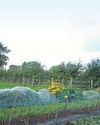
SOW GREEN THIS AUTUMN
Covering the soil with a green manure in winter offers many benefits and this is a good time to sow hardy types, says KG editor Steve Ott

A HISTORICAL HAVEN OF FRUIT AND FLOWERS
KG's Martin Fish takes time out from his own plot to visit a walled garden in Lincolnshire which has been home to the same family for more than 400 years

RESTORING THE BALANCE
The phrase regenerative gardening is often heard in gardening circles, but what is it? Can it help you to grow better veg? Ecologist Becky Searle thinks so, and tells us why
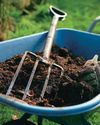
WASTE NOT, WANT NOT
Garden Organic's Anton Rosenfeld shares his expertise on using compost made from green bin collections with handy tips on getting the right consistency and quality
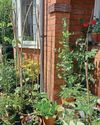
Celebrating Organic September!
In this special section we bring you four great features aimed at improving your crops and allowing nature to thrive
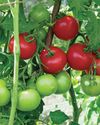
SEEING RED
Do your tomatoes have a habit of remaining stubbornly green? Or perhaps you're lucky to enjoy lots of lovely fruits - just all at once. Either way, Benedict Vanheems is here with some top tips to ripen and process the nation's favourite summer staple
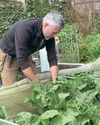
NEW KIDS ON THE BROCCOLI!
Rob Smith is talking broccoli this month with a review of the different types available and suggestions for some exciting new varieties to try

A NEW kitchen garden
Martin Fish is getting down to plenty of picking and planting on the garden veg plot, while Jill is rustling up something pepper-licking good!